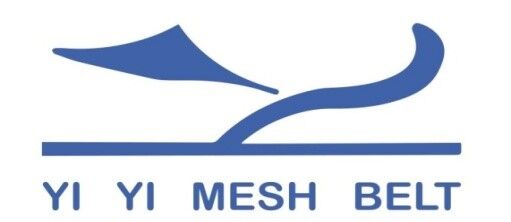
Stainless steel mesh belt is also known as conveyor mesh belt, metal mesh belt, chain link mesh belt.
Stainless steel mesh belt is a kind of conveyor belt using stainless steel or metal as material, which is more suitable for flowing work. Because the conveyor belt is mesh, there is no restriction on the shape of the drying object.
Stainless steel mesh belt has the effect of corrosion resistance to atmosphere, acid, alkali and salt, etc. It is a special kind of alloy steel. The general content of chromium is not less than 12%, usually around 18%.
Stainless steel mesh belt is broadly divided into two categories: one is chromium stainless steel mesh belt; the other is chromium-nickel stainless steel mesh belt, - the latter has better corrosion resistance and is more widely used.
Stainless steel mesh belt can convey materials in a certain conveying line, from the initial supply point to the final discharge point between the formation of a material conveying process. It can be used for conveying scattered materials as well as for conveying finished products.
In addition to pure material conveying, it can also cooperate with the requirements of the process in the production process of various industrial enterprises, forming a rhythmic flow of work transport line stainless steel metal mesh belt in the electronics factory is commonly used in the substrate active pull out consumption, chain metal mesh belt for circuit board plug-in, welding, inspection and other consumer processes.
The width adjustment installation of the insert line conveyor accepts the international advanced ball bearing, which is light, flexible and noiseless.
The rack of the plug-in line conveyor accepts the layout of aluminum profiles, which is beautiful in appearance and easy to place.
Chloride ion is very harmful to stainless steel mesh belt. In the passivation process should be strictly control the content of chloride ions in the passivation solution, the chemical materials used for passivation have limited requirements for chloride ions. The water used for passivation solution preparation and cleaning water also has strict water quality requirements for chloride ions to ensure that the passivated product is not contaminated with chloride ions to avoid future problems.
CONTACT
We're here help every step of the way.
Related Products
 How Trapezoidal Mesh Belt Is Used for Chocolate Coating Production Process
How Trapezoidal Mesh Belt Is Used for Chocolate Coating Production Process How Spiral Wire Mesh is Used in the Production of Poultry Processing
How Spiral Wire Mesh is Used in the Production of Poultry Processing If you are replacing the original metal wire belt, what parameters do you need to provide
If you are replacing the original metal wire belt, what parameters do you need to provide Chain Type and Model for Chain Driven Wire Mesh Metal Conveying Production
Chain Type and Model for Chain Driven Wire Mesh Metal Conveying Production How metal conveyor belts are used in the ready meal industry
How metal conveyor belts are used in the ready meal industry What Type of Metal Mesh Belt Can Be Used for Quick Freezing of Shrimp and Fish
What Type of Metal Mesh Belt Can Be Used for Quick Freezing of Shrimp and Fish Spiral Freezer Mesh Belt Used for Cooling Operations in the Baking Industry
Spiral Freezer Mesh Belt Used for Cooling Operations in the Baking Industry Applications and Advantages and Disadvantages of Metal Chain Plate Belt
Applications and Advantages and Disadvantages of Metal Chain Plate Belt
Message








